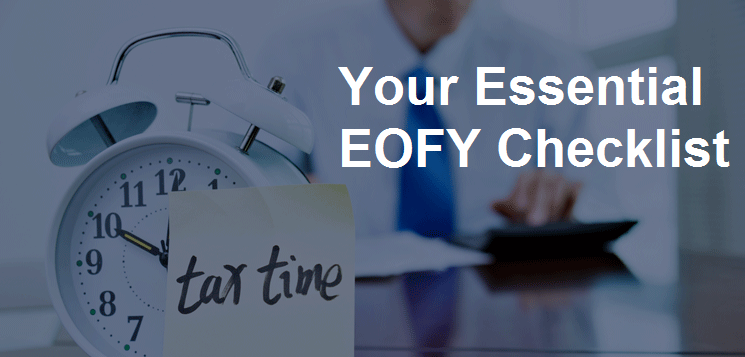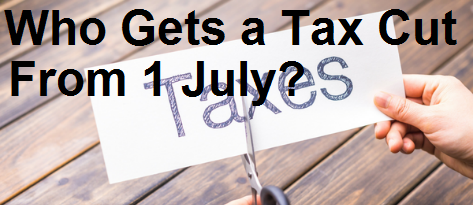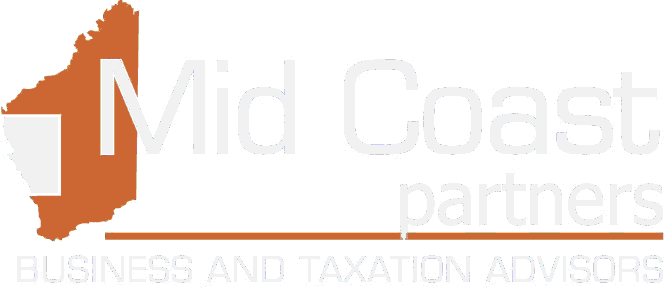Newsletter
Inside this month, how the one-off super guarantee amnesty works, what’s changing on 1 July, and your essential EOFY checklist.
- One off Super Guarantee Amnesty
- Qualifying for the amnesty
- What do employers pay under the amnesty?
- Where to from here?
- What’s Changing on 1 July 2018
- Individuals
- Business
- Superannution

Employers that have fallen behind with their superannuation guarantee (SG) obligations will have 12 months to “self-correct” under a new amnesty announced late last month.
The ATO estimates that $2.85 billion is currently owed in late or missing SG payments. Running from 24 May 2018 for 12 months, the amnesty encourages employers to reduce this SG gap by providing relief from the punitive penalties that normally apply to late payments.
Even if you do not believe that your business has an SG underpayment issue, it is worth undertaking a payroll audit to ensure that your payroll calculations are correct, and employees are being paid at a rate that is consistent with their entitlements under workplace laws and awards.
Qualifying for the amnesty
The amnesty applies to employers that have underpaid or not paid SG for any period from 1 July 1992 up to 31 March 2018.
To qualify for the amnesty, employers must disclose the outstanding SG to the Tax Commissioner using the SG Amnesty ATO payment form or the SG Amnesty Fund payment form where the payment has been made directly to the employee’s fund. You either pay the full amount owing, or if the business cannot pay the full amount, enter into a payment plan with the ATO. If you agree to a payment plan and do not meet the payments, the amnesty will no longer apply.
Bear in mind that the amnesty only applies to “voluntary” disclosures. The ATO will continue its compliance activities during the amnesty period so if they discover the underpayment first, full penalties apply. The amnesty also does not apply to amounts that have already been identified as owing or where the employer is subject to an ATO audit.
What do employers pay under the amnesty?
Normally, if an employer fails to meet their quarterly SG payment on time they need to pay the SG charge (SGC) and lodge a Superannuation Guarantee Statement. The SGC applies even if you pay the outstanding SG soon after the deadline.
Employers pay:
- The SGC comprised of:
- The outstanding SG entitlements (although this component might be higher than what it would have been had the entitlements been paid on time)
- Interest of 10% per annum, and
- An administration fee of $20 for each employee with a shortfall per quarter
- Penalties of up to 200% of the amount of the underlying SG charge
- A general interest charge if the SGC or penalties are not paid by the due date
On top of this, the SGC amount is not deductible – even if you pay the outstanding amount. That is, if you pay SG late, you can no longer deduct the SG amount even if you bring the payment up to date.
Under the quarterly superannuation guarantee, the interest component is calculated on an employer’s quarterly shortfall amount from the first day of the relevant quarter to the date when the SG charge would be payable (not from the date the SG was overdue).
Under the amnesty, employers pay:
- The SGC:
- The outstanding SG entitlements
- Interest of 10% per annum
- No administration fees
- No penalties
- A general interest charge.
An extra benefit of using the amnesty period to catch up is that the SGC amount is deductible. The ability to deduct SGC and the reduction in penalties could be significant for employers that have fallen behind with their SG obligations.
Special provisions exist within the legislation to automatically protect employees from inadvertently breaching concessional contribution cap limits if the unpaid SG is paid to the Commissioner and then transferred to the employee’s superannuation fund. Where the employer makes the payment directly into the employee’s fund, the individual would need to apply to the Commissioner requesting the exercise of discretion to either disregard the concessional contributions or allocate them to another financial year.
Where to from here?
Legislation enabling the amnesty is currently before Parliament and will not become law until at least June 2018. Despite this, the clock is ticking.
If your business has fallen behind on its SG obligations and is eligible for the amnesty, you need to start working through the issues now or contact us to work through the issues for you. There are several calculations that need to be completed and these may take some time to complete.
If your business has engaged any contractors during the period covered by the amnesty, then the arrangements will need to be reviewed as it is common for workers to be classified as employees under the SG provisions even if the parties have agreed that the worker should be treated as a contractor. You cannot contract out of SG obligations.
If you have not undertaken a payroll audit or an audit of rates paid to employees, you should do this within the next 12 months.
If a problem is revealed, you can correct it without excessive penalties applying. If you are uncertain about what Award and pay rates apply to employees, the FairWork Ombudsman’s website has a pay calculator or you can contact them online or call them on 13 13 94.
What’s Changing on 1 July 2018?

Individuals
Personal tax bracket changes – The top threshold of the 32.5% personal income tax bracket will increase from $87,000 to $90,000*.
Introduction of the Low and Middle Income Tax Offset* providing a tax offset for those with taxable income of up to $125,333.
GST on property developments and residential subdivisions – The way GST is collected on sales of newly constructed residential properties or new subdivisions will change from 1 July. Purchasers will be required to remit the GST directly to the ATO as part of the settlement process. If you are buying a property, it is essential that you check the details to ensure that these new requirements have been managed (see this issue in Business also).
Business
Single touch payroll – Employers with 20 or more employees at 1 April 2018 must use standard business reporting-enabled software from 1 July 2018 to report payments such as salaries and wages, PAYG withholding and superannuation. Single touch payroll is expected to be compulsory for businesses with 19 or less employees from 1 July 2019.
The $20k instant asset write-off for small business has been extended until 30 June 2019.
GST on low value goods – GST will apply to overseas sales of goods supplied to Australian consumers with a value under $1,000.
GST on property developments and residential subdivisions – The way GST is collected on sales of newly constructed residential properties or new subdivisions will change from 1 July. The vendor will no longer collect and remit GST on the purchase price of the residential premises. Instead, the vendor must notify the purchaser in writing that the GST needs to be paid to the Commissioner and advise the amount that must be paid. In most situations, the amount will be 1/11th of the contract price.
Where the margin scheme is used, it is 7% of the contract price. Where the transaction is between associates, it is 10% of the GST-exclusive market value. Notification rules will also apply to the vendor, even if the transaction does not trigger a GST liability.
R&D changes* – the way the R&D tax incentive is managed will change with caps introduced on cash rebates and for large companies, a refocussing of R&D to high intensity R&D activities.
Changes to the Wine Equalisation Tax – the rebate cap will reduce from $500,000 to $350,000 and the eligibility criteria tightened.
Significant global entity definition change* – Special reporting requirements are in place for significant global entities (SGE) – large global entities with revenues in excess of $1bn or a member of their group. Many smaller companies that are related to or subsidiaries of these large entities are also affected. This definition will be broadened further to include members of large multinational groups headed by private companies, trusts and partnerships; and members of groups headed by investment entities.
Superannuation
Event based reporting for SMSFs – A new reporting regime commences for SMSFs. All SMSFs must report events that affect their members’ transfer balance accounts (for example, when an SMSF member first starts to receive a pension from their fund). Timeframes for reporting are determined by the total superannuation balances of the SMSF’s members. Where all members of the SMSF have a total superannuation balance of less than $1 million, the SMSF can report this information at the same time as the annual return. SMSFs that have any members with a total superannuation balance of $1 million or more must report events affecting members’ transfer balances within 28 days after the end of the quarter in which the event occurs.
Carry forward concessional contributions – people with super balances below $500,000 will be able to rollover their unused concessional caps for up to 5 years. Unused cap amounts can be carried forward from the 2018-19 financial year; which means the first opportunity to use these new rules will be 2019-20.
Downsizer contributions – if you are over 65, have held your home for 10 years or more and are looking to sell, you might be able to contribute some of the proceeds of the sale of your home to superannuation.
First home saver scheme – First home savers are able to withdraw voluntary, after-tax superannuation contributions they have made to put towards their first home.
Changes to protect employees against inadvertent breaches of concessional caps* – Individuals whose income exceeds $263,157 and have multiple employers will be able to nominate that their wages from certain employers are not subject to the superannuation guarantee (SG).
*Change has been announced but has not become law at the time of writing.

No one wants to pay more tax than they need to or face unnecessary risks. We’ve compiled a list of our top tips for you.
1. Donate – If you are going to donate to charity, now is the time. Any donations you make to deductible gift recipients can be deducted this year. Remember, if you received something in return for the money, like goods purchased at a charity auction, you may not be able to claim a deduction for the full payment. There are special rules dealing with this situation that need to be taken into account.
2. Work related deductions – you can claim a deduction for business expenses you have incurred that have not been paid by your employer. But be careful, you need to be certain that what you are claiming is a legitimate business expense and able to be claimed. For example, you cannot claim the cost of dry cleaning the clothes you wear to work unless it is protective clothing, a uniform required by the business, or occupation specific clothing (like the checked pants some chefs wear).
To be legitimate, the expense must be for something you need to do your job. Items like laptop bags have been in the news lately because some handbags can be used to carry laptops. This does not mean that your Gucci bag is suddenly deductible. It is really up to you to justify the deduction that you are claiming, keeping records of the actual usage of the item can help with this.
3. Home office expenses – if you work from home as part of your employment, you may be able to claim items such as phone expenses, running costs for your home, and equipment. Just bear in mind that expenses need to be in proportion to your use of the home for work purposes. If your home is a place of business and you are entitled to claim a deduction for interest expenses or rent, then this will generally impact on your ability to claim the full main residence exemption from CGT when you sell the home.
4. Earning extra cash from AirBNB style services – The tax treatment of what you earn by renting all or part of your house through AirBNB and similar services is the same as any other residential rental property arrangement. You must include the rental income in your income tax return, but you can also claim tax deductions for expenses associated to the rental, such as the interest on your home loan, professional cleaning, fees charged by the facilitator, council rates, and insurance. Expense claims need to be in proportion to the rental, that is, how much of the house is used and for how long. Also, beware that this type of activity can restrict your ability to claim the CGT main residence exemption when you sell the property if it is or has been your home.
5. Uber – If you drive for Uber or a similar service, the income you earn needs to be declared on your income tax return. Plus, you need to be registered for GST. You can claim expenses for your car that relate to transporting passengers (relative to the kilometres travelled with passengers).
6. Danger zones – Expense claims that are high on the Australian Taxation Office (ATO) hit list include:
- Travel expenses – Problems arise when people make claims for expenses that they did not actually incur. Typically, this happens when someone receives an allowance for travel but does not spend it (they might stay with family or friends instead). While the ATO publishes some reasonable rates each year for food and accommodation expenses, these only provide limited relief from the full record keeping rules. You cannot claim a deduction for the ATO reasonable rate amount if you spent less than this on food and accommodation.
- Self-education expenses. Any study you claim as self-education must be connected to the income you are currently earning (either to maintain or improve your specific skills or knowledge) or is likely to result in increased income from existing income earning activities. Merely doing a course while working full time does not make the course deductible. Be careful of excessive claims for travel overseas and luxury courses. You need to prove that these expenses are essential to your current work.
7. You can no longer claim – If you are a property investor, you can generally no longer claim the cost of travelling to and from your investment property.

1 July 2018 is the start date for the seven year income tax plan announced in the recent 2018-19 Federal Budget. The seven year plan benefits low and middle income earners in the first few years before expanding out to a broader restructure of the tax rates and brackets for everyone.
From 2018-19, the top threshold of the 32.5% personal income tax bracket will increase from $87,000 to $90,000. Dovetailing into the tax bracket change is the introduction of the Low and Middle Income Tax Offset for those with taxable incomes up to $125,333. The offset is a non-refundable tax offset that you receive when you lodge your income tax return.
If your annual taxable income is $80,000 in 2018-19, then the personal income tax changes provide an annual tax reduction of $530 per year. If your annual taxable income is $120,000, then the changes give you an annual reduction of $215.
The legislation enabling the personal income tax cuts and the new tax offset is not yet law and currently before the Senate.
Assuming the legislation comes into effect, further changes are planned from 1 July 2022 culminating in the removal of the 37% tax bracket from 1 July 2024. The changes will allow you to earn more before facing a higher tax bracket.
Quote of the month
“Courage is fear holding on a minute longer”
– General George . Patton
General information disclaimer:
This article is for use of a general nature only and is not intended to be relied upon as, nor be substitute for, specific professional advice. No responsibility for loss occasioned to any persons or organisations acting on or refraining from action as a result of any information or material on our website will be accepted. Please ensure you contact us to discuss your particular circumstances and how the information provided applies to your situation.
